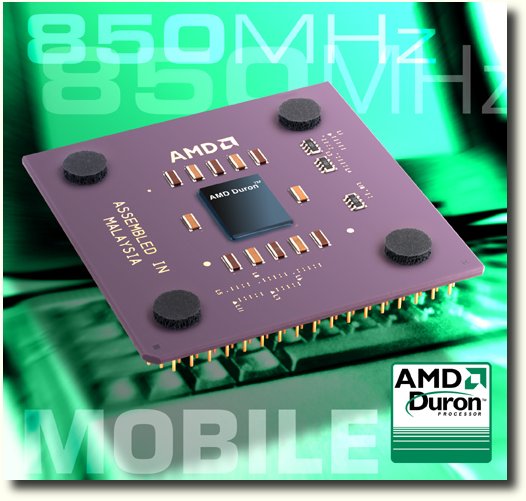The First Palomino: AMD Releases Mobile Athlon 4
New Mobile Duron
Today is also the day of the launch of a new Mobile Duron processor, which is not yet based on the 'Morgan' core, but on a modified 'Palomino'-core. 'Morgan' will soon be ready to replace the interim solution for Mobile Duron. The new Duron basically resembles Athlon 4, but with only 64 kB of on-die L2-cache. This means that this processor is also benefiting from the auto data pre-fetching, TLB-changes, SSE and PowerNow! implementations of Athlon 4. If you should buy a Duron-notebook, make sure it comes with the new Duron and not with the old model that started shipping a few months ago.
Chipsets And Pricing
AMD chose two notebook chipsets for Mobile Athlon 4 and Mobile Duron. It's ALi's MaGiK1 and VIA's KT133A chipset. The MAGiK1 is able to run with PC100/133 SDRAM as well as PC1600/2100 DDR SDRAM, but so far we weren't too convinced of its performance in desktop systems. VIA's KT133A is a good performer, but it does not come with DDR-SDRAM support.
AMD's mobile processors Athlon 4 and Duron will operate on the power saving 100 MHz (200 MHz DDR) system bus and not yet at 133/266 MHz. AMD provides its new mobile processors the following clock speeds at the following prices (1K units, OEM prices):
| Processor | Price |
|---|---|
| Mobile Athlon 4 1 GHz | $425 |
| Mobile Athlon 4 950 MHz | $350 |
| Mobile Athlon 4 900 MHz | $270 |
| Mobile Athlon 4 850 MHz | $240 |
| Mobile Duron 850 MHz | $197 |
| Mobile Duron 800 MHz | $170 |
Those prices make AMD's new mobile processors significantly more attractive than the more expensive mobile Intel processors.
Get Tom's Hardware's best news and in-depth reviews, straight to your inbox.
